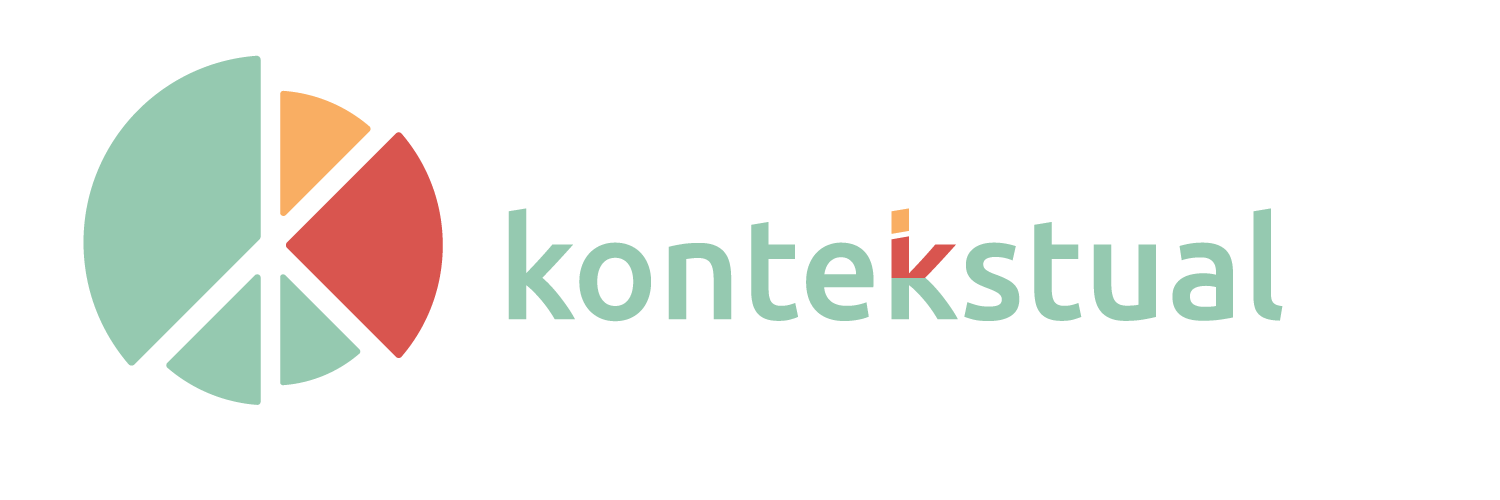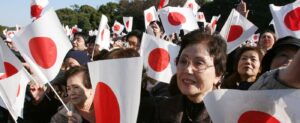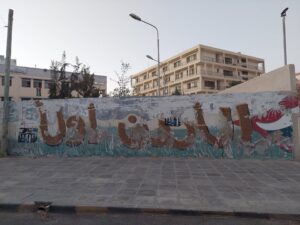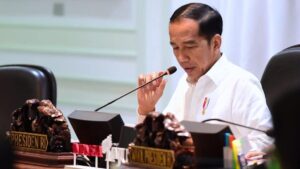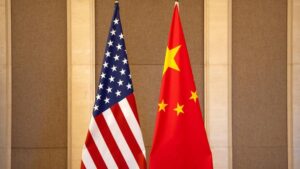Unpacking India’s Middlepowermanship in The COVID-19 Pandemic

Illustration of India's Prime Minister Narendra Modi. Photo: Getty Images
For a long time, India is seen as the main player in the South Asia region. The size of its population, added with its military might and diplomatic suaveness—to name a few, makes India a formidable middle power in the international scene. However, COVID-19 presents a challenge to this conception.
COVID-19 which ravaged the world since the start of 2020 cornered even the most powerful countries. India is no exception. The start of 2021 saw India battling with its most deadly wave of COVID-19 yet, with over 400.000 new cases per day which is worsened by the collapsing health facilities and the all too ignorant government (Choudhury, 2021). The failure domestically presents a contrast to India’s diplomatic success internationally where India and South Africa succeeded in gaining support from developing countries in demanding a vaccine waiver (Saligram & Cherian, 2020). This stark contrast of India’s domestic-international situation presents an interesting question: How does the middle power status of India stand in the middle of the COVID-19 situation? And how does India’s position now affect its power in the future?
Assessing The Concept of Middle Power
What makes a middle power country? According to Ping (2017), a country can be called a middle power seen through their population, military expenditure, GDP, GDP real growth, trade, life expectancy, geographic area, as well as gross national income per capita. Cooper et al (1993) gave a more nuanced analysis by saying that a country can be seen as a middle power when their influence transcends regional boundaries and allows them to contribute in shaping the global governance. Middle power countries also have a distinct normative behaviour where they champion “good international citizenship” in their foreign policy (Cooper, 1997).
To address the types of roles of middle power countries, a concept by Cooper et al (1993) will be used in this analysis. Cooper et al posits that middle power countries normally fulfill the role of a catalyst, facilitator, and manager. As a catalyst, middle power countries try to find and build the adequate momentum to address an international issue. As a facilitator, middle power countries build coalitions to reach an international agreement. Finally, as a manager, middle power countries act within a certain region to promote norms and to enforce institution building.
This article argues that though India is currently succeeding in its catalyst and facilitator role, India is failing in its managerial role due to several domestic factors. If this persists, trust and respect towards India may lower from the South Asia countries which could impact it’s image as a middle power in the international scene.
Vaccine Activism: India’s Middle Power Strength
The country that is hailed as the “pharmacy of the world” seems to thrive in it’s catalyst (momentum building) and facilitator (coalition building) role during the pandemic. This is evident in several cases such as India’s Vaccine Maitri program, SAARC COVID19 Information Exchange Platform (COINEX) for regional information exchange, and several other programs that showcase India’s medical expertise and are warmly welcomed by international actors. Perhaps one of the most noticeable successes of India’s diplomacy is their initiative to petition for a vaccine waiver back in 2020. Alongside South Africa, India sent a petition towards the Trade Related Aspects of Intellectual Property Rights Council of the World Trade Organisation which calls for “a waiver from certain provisions of the TRIPS agreement for the prevention, containment, and treatment of COVID-19” (WTO, 2020). In it, India and South Africa repeatedly called for “global solidarity” from developed countries to help developing countries by sharing technological know-hows in developing the vaccine. The hope is that through this initiative, developing countries which usually have a high manufacturing capacity, can produce more vaccines to narrow the gap of vaccine inequality. Although the petition was rejected by developed countries, it did garner a wide support from developed and developing countries such as Indonesia, Egypt, Chad, Nepal, and many more (Saligram & Cherian, 2020).
The TRIPS petition, Vaccine Maitri, and other initiatives shows India’s capacity in exercising its middle-powermanship in times of crisis. The question then is how did India manage to do this? Looking back to India’s past, two factors can be considered. First, India has had a long history of medicine development and health diplomacy which allows them to have more experience and knowledge in handling the pandemic. According to IBEF (2021), India’s health sector grandeur can be seen through four aspects; it’s rising manpower of health professionals, rising demand of health care services, increasing investment from foreign health care actors, as well as a strong support from the government to use medical diplomacy as India’s niche in the international scene. In fact, India has surpassed the recommended 1: 1,000 ratio of citizen to doctor in 2018 according to WHO. India has also invested around US$100 million to create bilateral health projects in countries such as Southeast Asia, South Asia, and Africa since 2009 (Maddu & Reddy, 2014).
Another factor that contributes to India’s image as a catalyst and facilitator is its longer history as a bastion of non-alignment. In the Cold War era, Nehru led India to create a third way between the heated rivalry amongst the East and the West. In 1961, India was amongst other four countries in creating the impactful Non Aligned Movement that was quickly supported by other developing countries. The non-alignment movement allowed India to lead the international scene despite having a limited material capacity which puts India on the map as a middle power (Wagner, 2010).
Modi’s Image Management: India’s Middle Power Downfall
India’s history in medical development and as a leader of developing countries allows it to thrive in leading the international scene in it’s pandemic-relief efforts. However, the start of 2021 quickly shows the fragility of these international efforts when confronted by domestic turmoil. The fact is that Prime Minister Modi was too confident that the COVID-19 pandemic was already handled and life could get back to normal. According to PIB Delhi (2021), Modi said that India had reached the “endgame” of the COVID-19 pandemic in early March 2021. This confidence overlooks the fact that by the end of May according to Our World In Data (2021), only 0.7% of Indian population have had the full dose of vaccination. It also seems that India hadn’t taken vaccination seriously. It has focused its effort on being one of the biggest vaccine producers to export the doses instead of increasing the effort to vaccinate domestically. Because of this perceived safety to ease restrictions and get back to normal, Modi seemed to put aside his effort to curb the pandemic and instead has allowed big religious gatherings and political rallies for his Bharatiya Janata Party without strict health protocols. Large gathering of unmasked population allowed the pandemic to fester and lead India to its worst health crisis yet.
Not only for its lack of preparation that is caused by its overconfidence, the pandemic was also worsened by the covering up of the actual state of the crisis. Quoting Gettleman et.al. (2021), instead of admitting their mistakes in the handling of the pandemic, the government of India chose to list their achievements so far and the “positive side” of the pandemic. Additionally, instead of filling the cabinet with health experts that can give proper advice on how to make things better, Modi backed himself up with political allies that only want to please the president and are too scared to propose anything substantial. Help from foreign allies also can’t do much if the government keeps focusing on protecting the president’s image. Modi’s obsession with image management instead of crisis management exacerbates the health crisis and puts the citizen in serious danger.
Seeing into India’s Future
According to Kotasthane et al. (2020), India’s growing middlepowermanship might mean that it can be a swing power between the US and China, reminiscent of India’s glory under the leadership of Nehru. This very power is what allows India to gain its independence and what allows other developing countries to perceive India as a leader. However, if the power declines, India will be forced to pick a side and it will most likely be the US.
This article has argued that India’s middlepowermanship has strengthened in the start of the pandemic through its regional efforts and initiative in the TRIPS waiver petition. However, domestically India is met with a president too confident to prepare for the next wave and in the end scrambling to maintain its international image. If this condition persists, if Modi doesn’t manage the pandemic well, the pandemic will devastate the region for far too long which may lead to multiple scenarios; the health protocol and restriction will hamper economic growth, the once robust population of India will slowly diminish due to the virus and populations will rebel against the state due to the government’s failings, and India’s errors that are seen by the whole world will make it lose its justification to enact their vaccine diplomacy. In short, India will lose the basis of their middlepowermanship—growing population, thriving economy, and international standing—in the international scene. Hence, as long as India’s domestic failings under Modi persist, it’s hard to imagine that India’s middlepowermanship can recover its grandeur.
Reference
Cooper, A. F., Higgott, R. A., & Nossal, K. R. (1993). Relocating middle powers: Australia and Canada in a changing world order (Vol. 6). UBC Press.
Gettleman, J., Kumar, H., Singh, K., & Yasir, S. (2021). India’s COVID-19 Crisis Shakes Modi’s Image of Strength. New York Times. Retrieved from https://www.nytimes.com/2021/05/01/world/asia/india-covid19-modi.html
IBEF (2021). Healthcare Industry in India, Indian Healthcare Sector, Services. Retrieved 8 June 2021, from https://www.ibef.org/industry/healthcare-india.aspx
Kotasthane, P., Kanisetti, A., Manur, A., & Aladdi, A. (2020). India’s bargaining power with China and US will grow in post-Covid world. The Print. Retrieved from https://theprint.in/opinion/indias-bargaining-power-with-china-and-us-will-grow-in-post-covid-world/420395/
Madhu, R., & Reddy, S. (2014). An Opportune time for India to play the Global Health Diplomacy Card. Global Policy, September, 22.
Our World In Data. (2021). Coronavirus (COVID-19) Vaccinations – Statistics and Research. Retrieved 8 June 2021, from https://ourworldindata.org/covid-vaccinations?country=IND
Pattanaik, S. S. (2021). COVID-19 Pandemic and India’s Regional Diplomacy. South Asian Survey, 28(1), 92-110.
PIB Delhi. (2021). Delhi Medical Association (DMA) Honors Dr Harsh Vardhan for Outstanding Service & Exemplary Work during COVID-19 Pandemic. Delhi: Ministry of Health and Family Welfare.
Ping, J. H. (2017). Middle Power Statecraft: Indonesia, Malaysia and the Asia-Pacific. Routledge.
Saligram, P., & Cherian, P. (2020). COVID-19: The world needs to back India and South Africa’s call to remove TRIPS hurdles. The Caravan. Retrieved from https://caravanmagazine.in/health/the-world-needs-to-back-india-and-south-africas-call-to-remove-trips-hurdles-to-covid-technology
Wagner, C. (2010). India’s gradual rise. Politics, 30(1_suppl), 63-70.
World Trade Organization. (2020). WAIVER FROM CERTAIN PROVISIONS OF THE TRIPS AGREEMENT FOR THE PREVENTION, CONTAINMENT AND TREATMENT OF COVID-19. WTO. Retrieved from https://docs.wto.org/dol2fe/Pages/SS/directdoc.aspx?filename=q:/IP/C/W669.pdf&Open=True
Ni Made Diah Apsari Dewi is an International Relations student in Universitas Gadjah Mada. She can be found in Instagram with the username @diah_apsari
